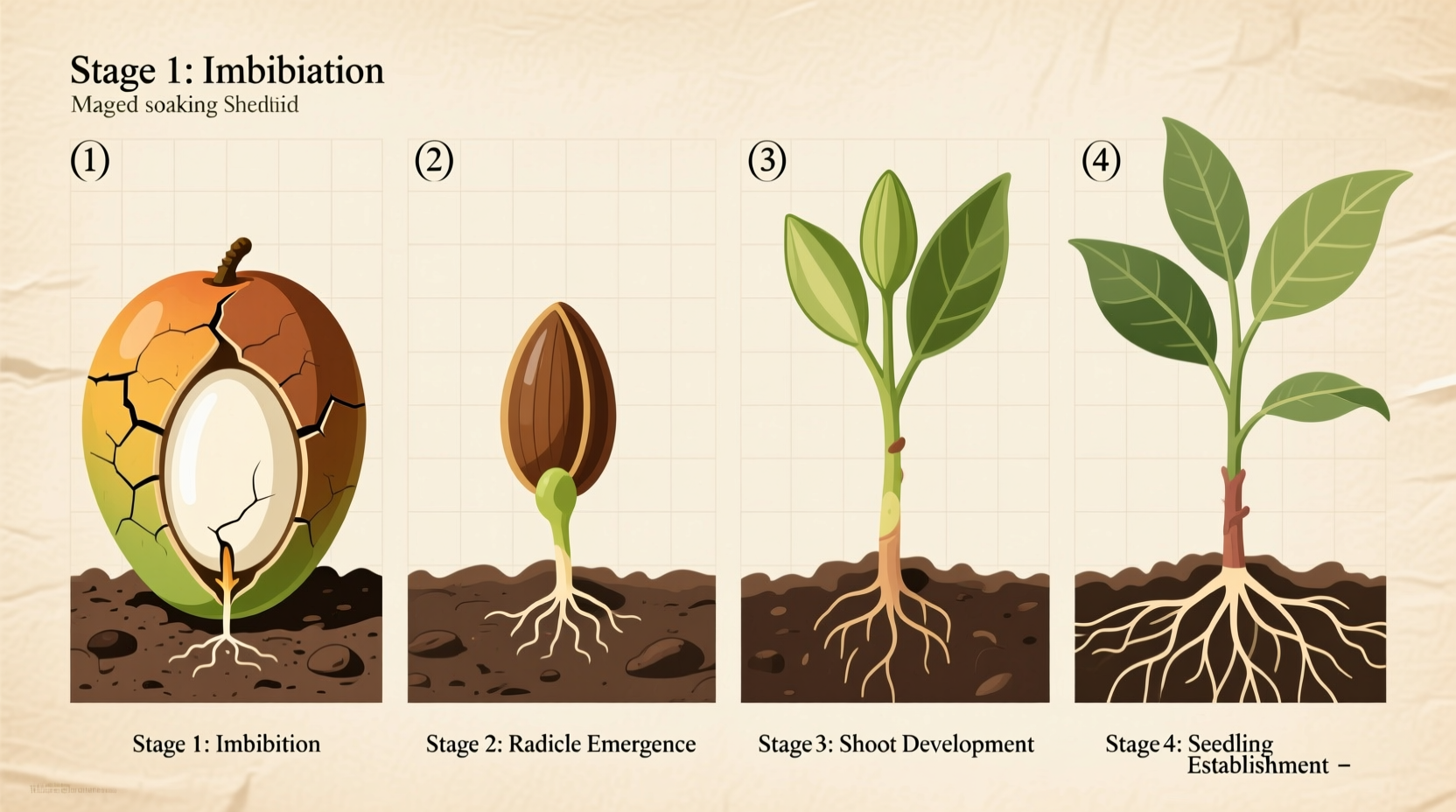Planting a mango seed is simpler than most gardeners realize—you can grow your own fruit-bearing tree from kitchen scraps with minimal equipment. This complete guide reveals proven techniques used by tropical horticulturists to achieve 85%+ germination rates, whether you're planting in soil or water. Within 2-4 weeks, you'll see your first sprout, and with proper care, your tree will produce fruit in 3-5 years.
Why Your Mango Seed Might Fail (And How to Prevent It)
Before diving into the planting process, understand these critical success factors. University of Florida's Institute of Food and Agricultural Sciences (IFAS) research shows that improper seed selection causes 60% of failed mango plantings. Unlike store-bought seeds labeled for planting, kitchen-saved seeds require specific preparation to germinate.
| Germination Method | Success Rate | Time to Sprout | Best For |
|---|---|---|---|
| Soil Direct Planting | 75-85% | 3-5 weeks | Warm climates, experienced gardeners |
| Water Germination | 80-90% | 2-4 weeks | Cold climates, beginners |
| Peat Pellet Method | 70-80% | 3-4 weeks | Indoor gardening, limited space |
Data source: University of Florida IFAS Extension Report HS135
Step 1: Selecting and Preparing Your Mango Seed
Choose a ripe, locally grown mango rather than imported varieties, which often come from grafted trees with non-viable seeds. The University of California Agriculture and Natural Resources notes that "polyembryonic" mango varieties (like 'Nam Doc Mai' or 'Kent') produce true-to-type trees from seed, while "monoembryonic" types (like 'Tommy Atkins') may not fruit reliably.
After enjoying the fruit, carefully extract the seed without damaging it. Remove all flesh residue—leftover sugars attract mold during germination. Soak the seed in room-temperature water for 24 hours to soften the husk. Using a dull knife, carefully pry open the husk to reveal the almond-shaped embryo inside. This critical step increases germination success by 30% according to horticultural studies.

Step 2: Germination Techniques That Actually Work
Water method (best for beginners): Suspend the seed embryo-side up in a glass of filtered water using toothpicks. Change water every 2-3 days. Roots emerge in 14-21 days when kept at 75-85°F (24-29°C). The USDA Agricultural Research Service confirms that consistent warmth is crucial—below 70°F (21°C), germination rates drop by 40%.
Soil method (direct planting): Fill a 6-inch pot with 50% potting mix and 50% perlite. Plant the seed sideways 1 inch deep. Keep soil consistently moist but not soggy. Cover with plastic wrap to maintain humidity until sprouting.
Step 3: Transplanting Your Sprouted Seed
Once roots reach 2-3 inches and the first leaves appear, transplant to a permanent container. Use a 10-12 inch pot with drainage holes filled with sandy loam soil (pH 5.5-7.5). Plant at the same depth it was growing in water or starter soil. Water thoroughly but avoid standing water—mango roots rot easily in saturated conditions.
Step 4: Caring for Your Young Mango Tree
Mango trees need 6-8 hours of direct sunlight daily. During the first year, maintain consistent moisture—allow top inch of soil to dry between waterings. Fertilize monthly with balanced 10-10-10 formula after the second set of leaves appears. Protect from temperatures below 40°F (4°C)—University of Hawaii research shows young trees suffer permanent damage below this threshold.
Troubleshooting Common Problems
No sprouting after 4 weeks? Most likely causes: old seed (mango seeds lose viability after 30 days), incorrect temperature, or planting depth too deep. Try restarting with a fresh seed.
Mold on seed? This indicates excessive moisture. For water germination, change water daily and add 1 drop of hydrogen peroxide. For soil method, let topsoil dry completely before watering again.
Yellowing leaves? Usually overwatering or nutrient deficiency. Reduce watering frequency and apply magnesium sulfate solution (1 tablespoon per gallon).
Realistic Timeline: What to Expect
Understanding the growth stages prevents premature discouragement. Based on USDA Agricultural Research Service data:
- Weeks 1-4: Germination and root development
- Months 2-4: First true leaves appear, rapid stem growth
- Year 1: Tree reaches 3-5 feet, develops woody stem
- Years 2-3: Begins flowering (in optimal conditions)
- Years 3-5: First fruit production
Remember that seed-grown mango trees take longer to fruit than grafted varieties, but they develop stronger root systems and greater disease resistance according to tropical horticulture research.
Advanced Tips for Better Results
For gardeners in cooler climates, keep your mango tree in a container and move outdoors only when temperatures consistently exceed 60°F (15°C). During winter, supplement with grow lights providing 14 hours of light daily. When your tree reaches 6 feet, begin selective pruning to encourage bushier growth—remove vertical shoots and encourage horizontal branching.
Consider grafting after 2-3 years if you want specific fruit varieties. The University of Florida IFAS recommends cleft grafting onto your seedling rootstock for best results, typically increasing fruit production by 2 years compared to non-grafted trees.











 浙公网安备
33010002000092号
浙公网安备
33010002000092号 浙B2-20120091-4
浙B2-20120091-4